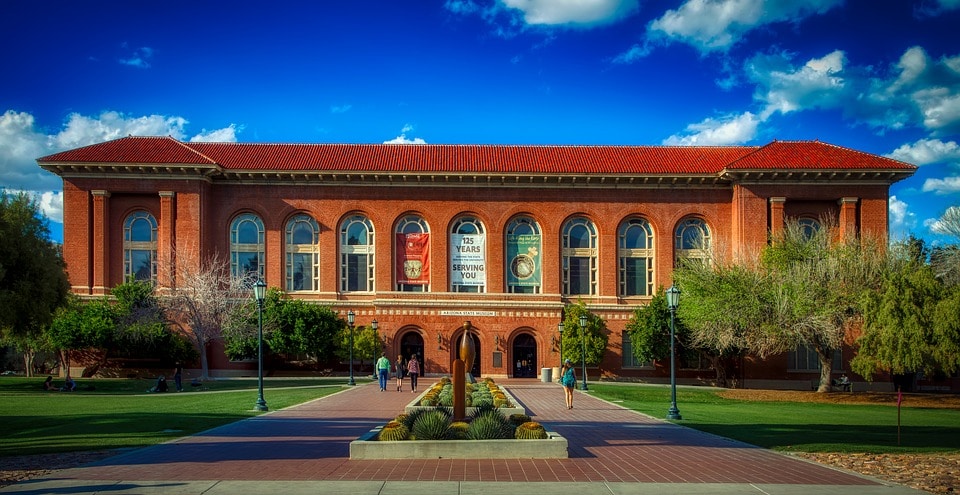The 100% renewable movement hits the University of Arizona – State regulators have approved a 100% clean energy agreement between the University of Arizona and Tucson Electric Power (TEP) that will offset the entirety of the university’s scope two emissions. Scope two refers to greenhouse gases resulting from the generation of electricity, heat or steam purchased from a utility provider. Specifically, Under the agreement, TEP will send power from portions of two new renewable energy projects to serving the energy needs of the University of Arizona. These new resources are a wind farm in New Mexico and a solar-plus-storage system southeast of Tucson, both of which are expected to begin service by late 2020. Source: University of Arizona
US Solar Fund agrees to buy a six-project, 39MW portfolio – “US Solar Fund has agreed to buy a 39MW portfolio of six utility-scale solar power projects in North Carolina from Cypress Creek Renewables. The London-listed investment firm, which entered into an exclusivity talk with Cypress Creek in June, said it has now executed binding agreements to buy the solar power projects. USF’s acquisition is expected to be completed in December, simultaneous with tax equity financing and the commencement of construction. USF said it intends to fund the acquisition and construction of the portfolio with cash of approximately $35m and does not expect using debt at this time.” Source: IPE Real Assets
After Massachusetts put pressure on a utility cluster study, the utility partially backtracked on 1 GW of solar power in the queue by removing 300 MW of projects that had already received interconnection approval from said study. After reaching out to a few developers in this queue, they pointed out that yes, they don’t have to pay for transmission upgrades – but many of these projects have years to wait before their substation upgrades complete. So, yes, movement forward – but for many another stop sign nearby.
Great Smoky microgrid – “Jeff Fisher has spent more time than most in the Great Smoky Mountains National Park. Not as a tourist, but as a lifelong resident of North Carolina’s Haywood County and a lineworker. The park is home to some of the tallest mountains on the east coast, and Fisher has spent his 34-year career at Duke Energy hiking the challenging terrain to fix broken power poles, wires and equipment to get the lights back on as quickly and safely as possible. With as much time as he spends walking in the woods, he has had plenty of opportunity to think about better ways to provide power. One of his ideas removed 3.5 miles of power lines and helped provide reliable power for park rangers to communicate in emergencies. Duke Energy installed a microgrid consisting of solar panels and batteries at the top of Mt. Sterling, one of the highest peaks in the park. Fisher estimates he climbed Mt. Sterling seven times a year to make repairs to the line before the microgrid, but now he doesn’t have to repair the system at all. He visits every six months for routine maintenance with a representative from NantEnergy (formerly Fluidic Energy), a vendor that provided the microgrid system.” Source: Duke Energy
300 mayors for solar power sign letter – Mayors have been busy in their support for solar this year. Most recently, mayors representing 300 cities signed on to a letter released by Environment America Research & Policy Center calling for a future powered by solar generation. The bipartisan show of support spans all 50 states in cities massive and small alike. Source: Renewable Energy Mag
This content is protected by copyright and may not be reused. If you want to cooperate with us and would like to reuse some of our content, please contact: editors@pv-magazine.com.










By submitting this form you agree to pv magazine using your data for the purposes of publishing your comment.
Your personal data will only be disclosed or otherwise transmitted to third parties for the purposes of spam filtering or if this is necessary for technical maintenance of the website. Any other transfer to third parties will not take place unless this is justified on the basis of applicable data protection regulations or if pv magazine is legally obliged to do so.
You may revoke this consent at any time with effect for the future, in which case your personal data will be deleted immediately. Otherwise, your data will be deleted if pv magazine has processed your request or the purpose of data storage is fulfilled.
Further information on data privacy can be found in our Data Protection Policy.